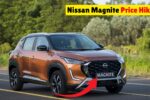India’s leading electric car manufacturer, Tata Motors, is preparing to greatly diversify its electric car range as competition emerges. According to sources cited by Autocar Professional, a sum majoring the USD 1 billion is being planned by the company for this strategy. This formation is a part of Tata motors plans, the company plans to introduce a premium brand Avinya in 2026.
Sitting above the company’s current MBUX equipped mainstream vehicles, the Avinya brand will initially launch with several models deriving from JLR’s cutting-edge EMA architecture.
Tata Motors’ Expensive Strategy For Avinya EV Portfolio
While Tata Motors has been one of the pioneering electric car manufacturers in India through its popular Nexon EV model, Tata’s Avinya bold strategy is for the brand. By sources, the automaker isreported to be developing a series of five cars and these include, the P1 model, P2 model, P3 model, P4 model and P5 model. The mentioned above will build on a sophisticated EMA architecture of JLR, aimed at the total annual production of roughly one lakh units by 2030. Here’s a detailed breakdown of Tata Motors’ plans:
Some of the main features of Tata Motors’ Avinya EV Portfolio are as follows
P1 (First Avinya Model):
- Pinned from the Avinya concept that premiered in April 22.
- As a last note, BMW has set its plan to debut its showrooms by the year 2026 during the final stages of the project.
- Expected annual production volume: 24,000 units.
- Anticipated price: For ₹35 lakh above, making it the priciest car from Tata Motors.
P2 (4.4-metre SUV):
- As proposed it can be a compact SUV similar to the Kia EV3 concept.
- It has emerged that the business case is still under formulation.
P3 (4.9-metre Utility Vehicle):
- Described as a multi purpose vehicle (like the Volvo EM90).
- Business case under consideration Business case under evaluation.
P4 (Lifestyle SUV):
- Stands on the same class as the Range Rover Sport or Velar.
- Pavement is expected to debut at the Bharat Mobility Global Expo in New Delhi.
P5 (Full-Size SUV):
- Styled to emulate the Range Rover with the body work of a three row SUV.
- Moving ahead of P2 and P3 development progress.
Target Volumes and Strategy It showed some target volumes and how the company developed a strategy to achieve them. The global EMA based Avinya portfolio flies a combined annual productions of near about one lakh units by 2030. This aggressive strategy shows Tata Motors’ more focused approach to cater to India’s upcoming premium EV market coupled with worldwide phenomena.
Manufacturing and Go-to-Market Strategy for the Avinya Range
While the first of the Avinya is part assembled and built from the P1 model at Tata Motors’ Sanand plant acquired from Ford India subsequent models could possibly be coming from the proposed plant in Tamil Nadu though further decisions on this has not yet been decided. Tata’s CEO and CFO PB Balaji and Tata Passenger Electric Mobility’s Chief Commercial Officer Vivek Srivatsa have pointed out several times that Avinya is a portfolio and not a model.
Due to low sales volumes expected in the first years of the Avinya brand, the company is expected to initially use its current dealership network in its new business model strategy for the new brand.
Tata Motors’ Strategy and Challenges in the EV Market
Currently, Tata Motors is a market leader in the Indian market of electric vehicles, and the company has outlined plans on how it will continue to dominate the industry as other players continue to emerge. Announcing a planned investment of USD 2 billion over the next decade, the company is also eyeing steep growth of its EV portfolio.
However Tata Motors is currently facing immense competitive pressures from domestic as well as from global players, which calls for strategic synchronized emphasis on innovation and ‘niche’ market segmentation strategies. Here are the key highlights of Tata Motors’ EV strategy and challenges:
Main Features of the Tata Motors EV Plan
Investment and Expansion Plans:
- $2 billion commitment to the EV business by the next decade.
- The targeted number of new EV launches is 10 or more by the end of the year 2026.
- For the volume segment, the new generation hybrid models of Harrier and Sierra are planned to be introduced in the year 2025.
Competition Landscape:
- Mahindra to gather momentum when it starts delivering the BE 6 and XEV 9e built on the new INGLO platform.
- Maruti Suzuki, the leading automobile manufacturer in India laid its foot in the entry-level competition to launch hatchback EVs.
- Other rivalries are Hyundai, Kia, Toyota and JSW MG Motor which has ventured in mid-size SUV category.
- Doing a market share analysis of the EVs that Tata sells, its share has dropped below fifty percent due to stiff competition.
Market Leadership and Growth Goals
The change in the Indian passenger vehicle EV market has been led by Tata Motors.
According to the market analysis goods and service experts expect that by the year 2,030 more than one twentieth of the passenger vehicles in use today would be electric ones.
Tata Motors has planned that more than 30% of its total sales will comprise EVs in the FY 2030-31, whereas at present, the market share of EVs in Tata Motors falls in the range of 12-15%. In view of strong product portfolio and tall goals, now, Tata motor is ready to face the dynamic structure of Indian EV market and escalating competition.
Tata Motors’ Drive to Lead India’s EV Revolution
With some powerful strategies, major investments and explicit goals, Tata Motors is ready to dominate the India’s emerging electric vehicle industry. Establishing a new premium Avinya brand and development of more than 10 electric vehicle models by 2026 are the evidence of its further ambitions and intentions.
Therefore, competition in the auto industry is expected to intensify, however, the prioritized EMA architecture, robust manufacturing base and secured dealership network prove to be quite beneficial for Tata Motors to accomplish its more than 30% EV sales aim by the end of 2030 and retain its leadership in the emerging market environment.






